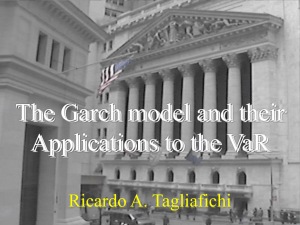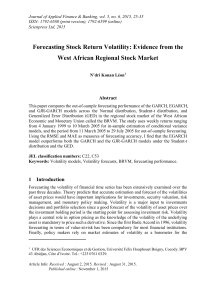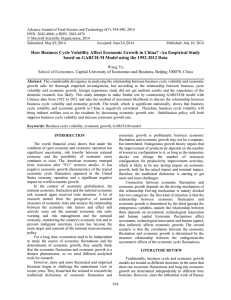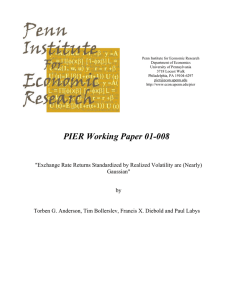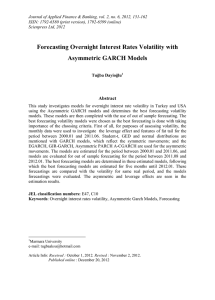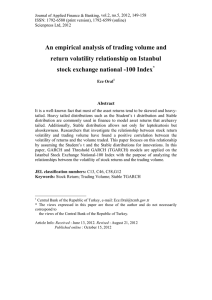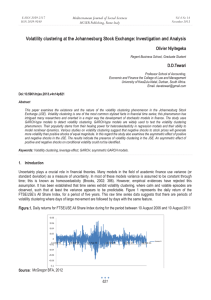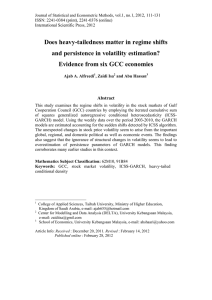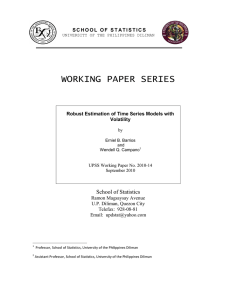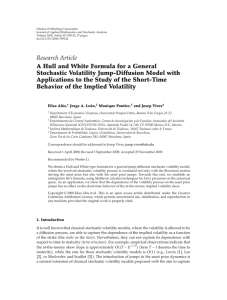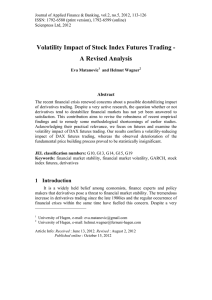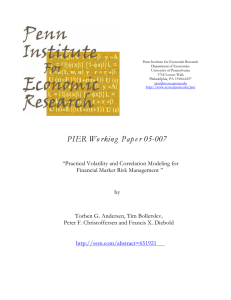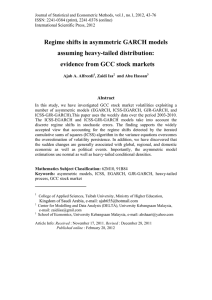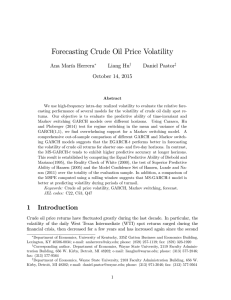ESTIMATING VOLATILITY OF ELECTRICITY DEMAND USING REALIZED VOLATILITY MODEL JOY J. JOSE
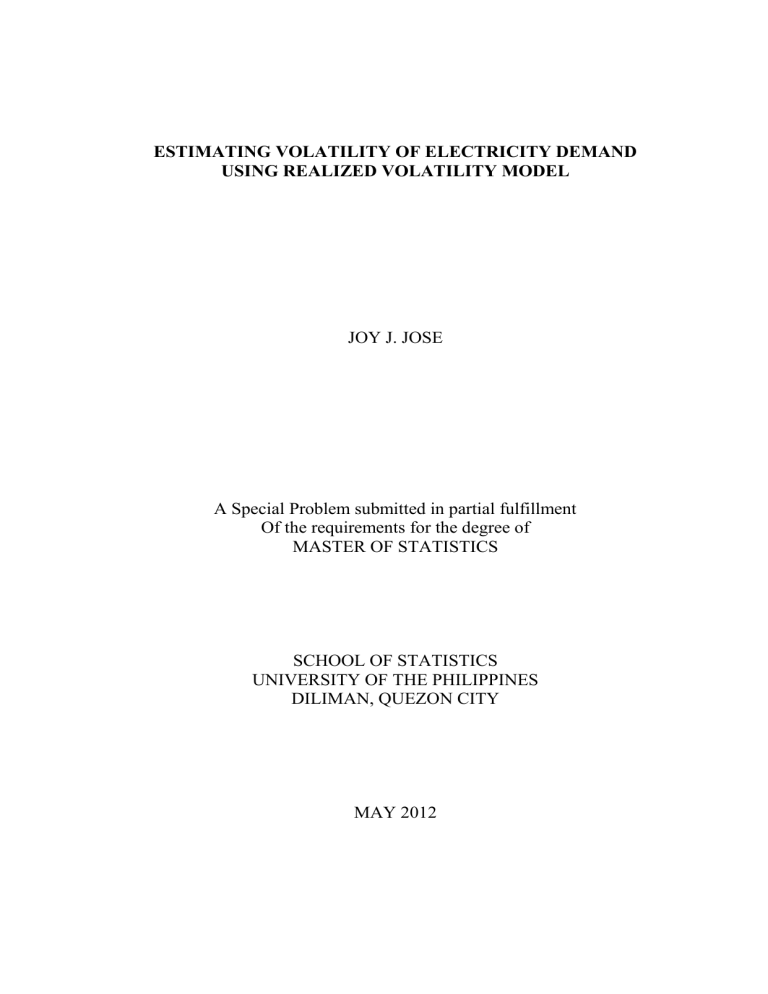
ESTIMATING VOLATILITY OF ELECTRICITY DEMAND
USING REALIZED VOLATILITY MODEL
JOY J. JOSE
A Special Problem submitted in partial fulfillment
Of the requirements for the degree of
MASTER OF STATISTICS
SCHOOL OF STATISTICS
UNIVERSITY OF THE PHILIPPINES
DILIMAN, QUEZON CITY
MAY 2012
ABSTRACT
The main objective of building volatility models is to forecast future volatility. Given a number of competing models, there is a need to evaluate the forecasting performance of each model. This study compared the forecasting performance of GARCH, Stochastic Volatility and Realized
Volatility models using the electricity demand of five large commercial and industrial electricity consumers from January 1, 2006 to June 30, 2011. The models are compared in terms of their out-of-sample forecasting performance to characterize the variation in the volatility. The actual
Realized Volatility is used as a measure of the true daily volatility where comparison of the different volatility models was made. The model’s predictive accuracy were compared in terms of MAPE and RMSE as well as Diebold-Mariano test, a formal statistical procedure for forecast accuracy comparison.
The empirical analysis showed that out-of-sample forecasting performance of Realized Volatility is significantly superior to Stochastic Volatility and GARCH models. Between GARCH and
Stochastic Volatility models, GARCH has better predictive accuracy in four out of five demand series.



![[These nine clues] are noteworthy not so much because they foretell](http://s3.studylib.net/store/data/007474937_1-e53aa8c533cc905a5dc2eeb5aef2d7bb-300x300.png)




